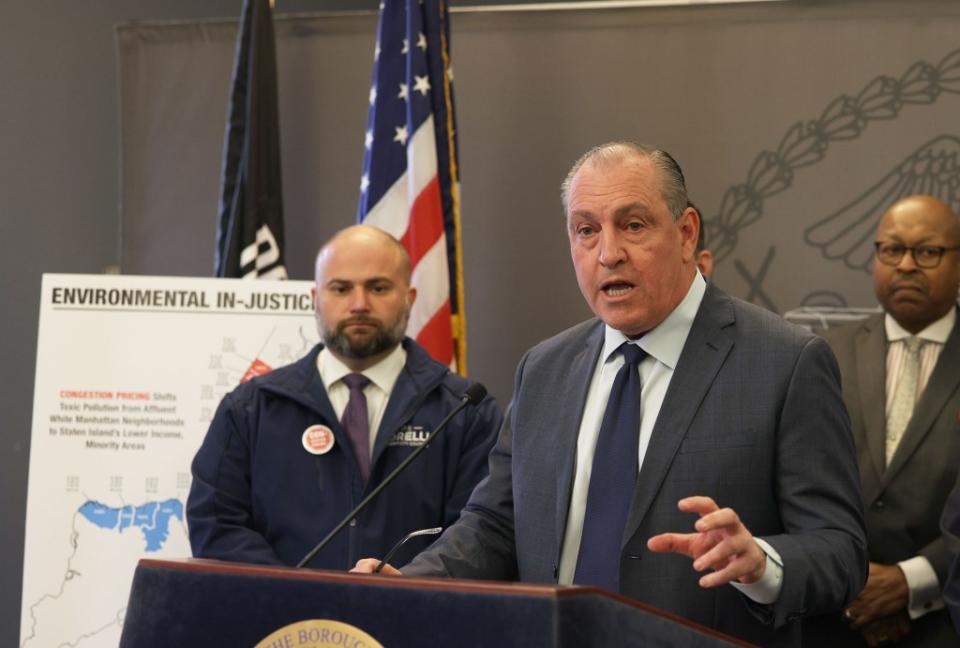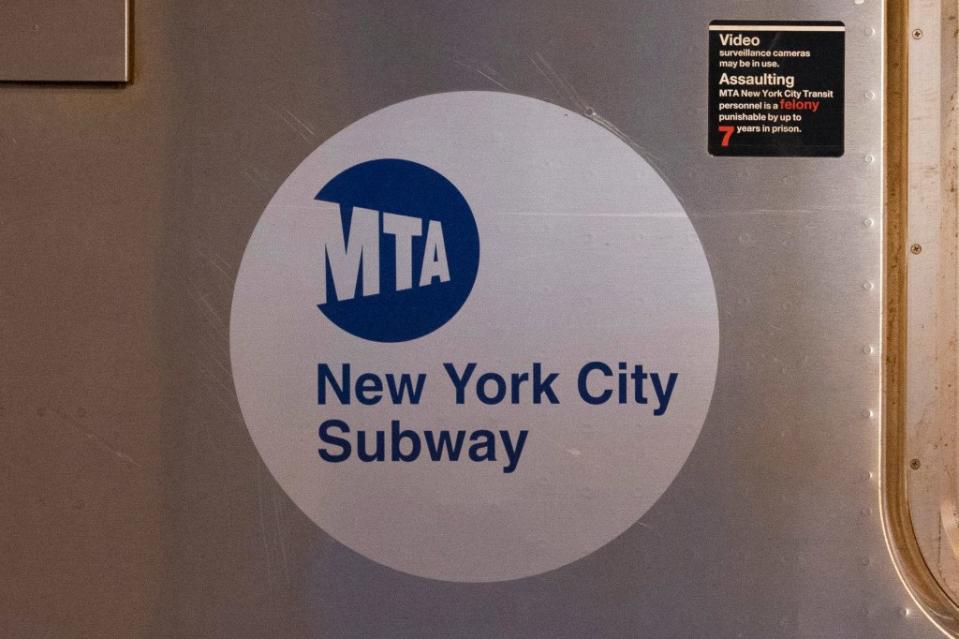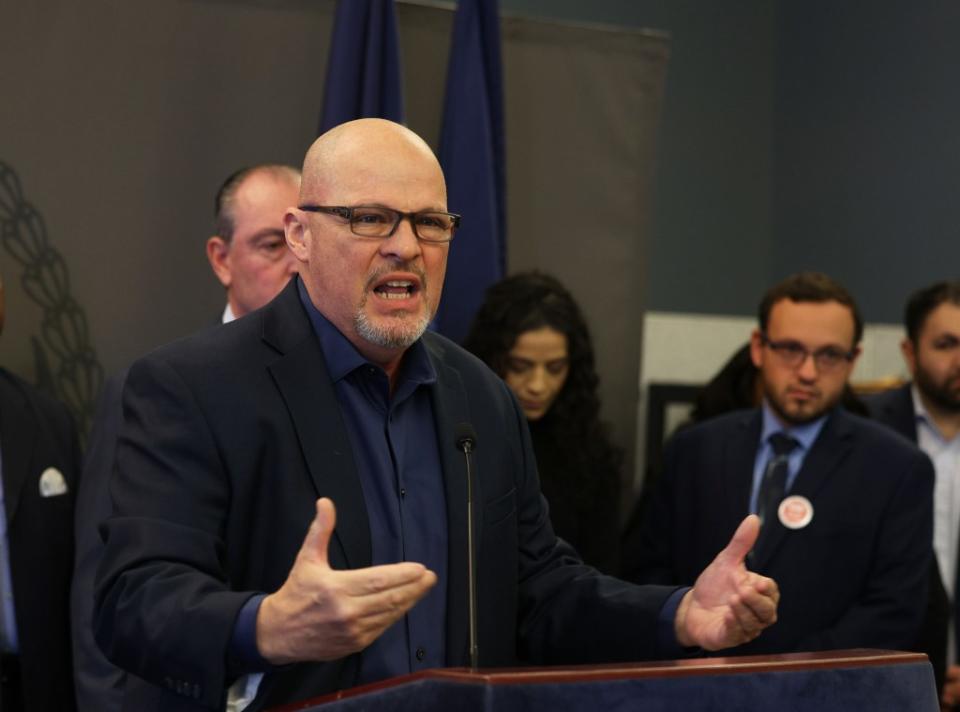Staten Island politicians, union heads welcome local NAACP chapter to congestion pricing opposition

Staten Island pols and union heads on Friday welcomed the local chapter of the NAACP to the congestion pricing opposition — arguing the looming $15 toll to drive on some of Manhattan’s busiest streets will harm minority communities.
The bipartisan contingent of elected officials and local leaders rallied against the state’s congestion tolling plan, claiming the resulting shifting air pollution patterns will disproportionately impact Staten Island’s low-income minority neighborhoods.
“If someone wanted to deliberately create a plan with the goals that wealthy, white residents would breathe cleaner air while low-income, minority residents would breathe in more toxic air pollution, then this congestion pricing program would meet those goals,” Staten Island Borough President Vito Fossella said.

Fossella was joined at Staten Island Borough Hall by teachers’ union president Michael Mulgrew and other officials, who hailed the Staten Island branch of the National Association for the Advancement of Colored People (NAACP) for lending their voice to the fight.
“Simply stated: if the MTA’s congestion pricing program is implemented, more will get sick, more Staten Islanders will die from the increases in the resulting hazardous air pollution,” Fossella charged.
“That sickness and those deaths will occur among the residents of Staten Island’s most diverse and low-income neighborhoods.”
New York’s controversial congestion pricing plan is expected to take effect as early as mid-June after a barrage of delays and lawsuits has held it up for years.
Under the plan, passenger vehicles will be charged a $15 toll to enter Midtown Manhattan below 60th Street. The MTA argues the new surcharge will raise $1 billion per year, which would be used to fund upgrades to the city’s public transit system.

Transit officials have long said the new pricing scheme will ease traffic on some of the Big Apple’s busiest roadways and reduce pollution in Manhattan.
Mulgrew, head of the United Federation of Teachers — which is suing over the congestion plan — took the transit agency to task for its assertions, which he claimed fly in the face of reality.
“The research is there. What they are doing is wrong. Plain and simple, it’s wrong,” Mulgrew said, accusing the MTA of being “willing to say, promise, or do anything, no matter the consequences” in order to “get [their] billion dollars.”
Minority City Council Leader Joseph Borelli (R-Staten Island) derided MTA Chairman and CEO Janno Lieber as “a snob” and “an elitist.”
“Come and find working-class people who live in some of the poorest zip codes in our borough, and tell us, John Lieber, tell us how this is benefiting our lives,” Borelli challenged the MTA chief during the Friday press conference.

For Jasmine Robinson, acting president of the Staten Island branch of the NAACP, the congestion pricing plan hits close to home.
“What is the meaning of congestion? It means to block, to clog, and this plan is going to block and clog so much traffic, and this is going to impact our communities negatively,” she said Friday.
“We talked about people that are always in these areas. This is me. This is where I live.”
She implored the MTA to reconsider what she called “an injustice” against hardworking folks who have no choice but to commute by car from Staten Island, which she called “a transportation desert.”
Neighborhoods on Staten Island’s North Shore — stretching from St. George to Mariners Harbor — are already designated by the Mayor’s Office of Climate and Environmental Justice as “Environmental Justice Areas.”
These areas suffer from poor air quality and high asthma and asthma-related hospitalization rates.
According to the office’s latest analysis, those disparities in health outcomes that already exist between Manhattan and Staten Island’s North Shore will only worsen if the congestion pricing plan is implemented.
Demetrius Crichlow, chief of the MTA’s subway operations who once ran the Staten Island Railway, defended the agency’s imminent congestion toll rollout.
“Staten Islanders want good transportation, they support transportation. They want great bus service, they want Staten Island Rail to operate as frequently as possible,” he told reporters Friday.
“Congestion pricing is a means to get there. We all know the infrastructure has to be replaced, we know that we need new trains, we know that we need new signal systems. We know that we need those things, and we need funding.”
Additional reporting by Nolan Hicks

